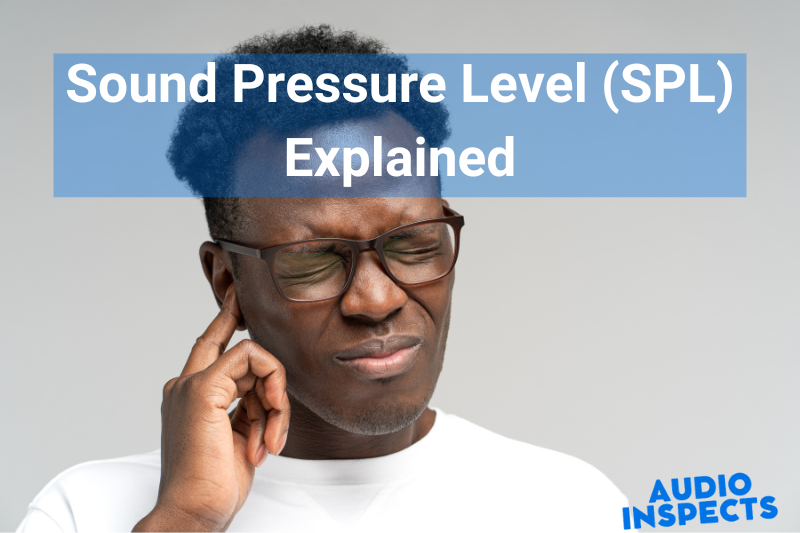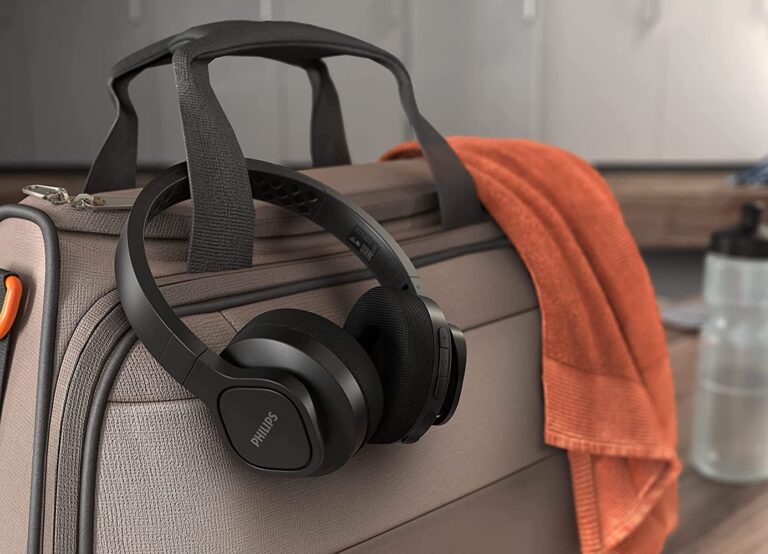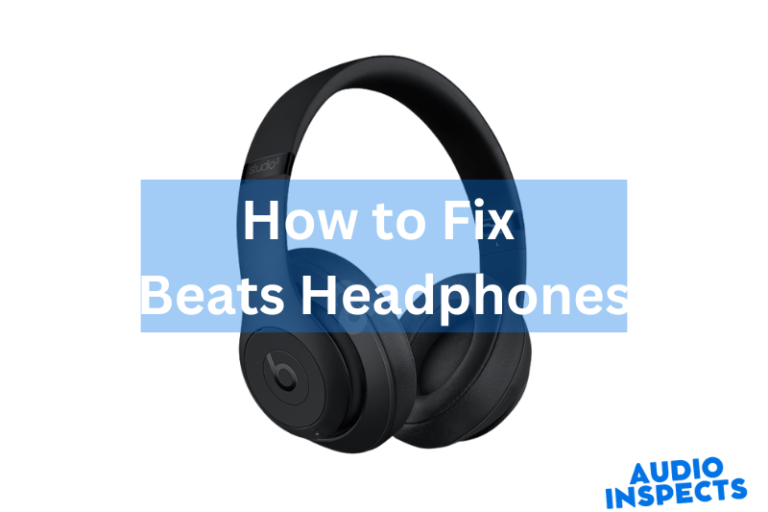Sound Pressure Level (SPL) Explained

We conduct independent testing and research of products, so you can make an informed decision before making a purchase. And when you do decide to make a purchase through our links, please note that we may earn a commission, but this does not affect the honesty of our reviews.
Sound pressure level (SPL) is a measurement of sound intensity as perceived by the human ear. It is a logarithmic unit of measurement used to quantify the volume level of sound waves in a given environment, and it is expressed in decibels (dB). In some cases, a sound pressure level can exceed the human hearing range, which means that a reading is taken on a scale that is outside of the range of human hearing.
It is important to learn about sound pressure levels because they can affect our health and safety if they get too high. Loud sounds can be harmful and can cause hearing loss and other noise-related health issues. Knowing the sound pressure level of a particular environment can help us make informed decisions about how to stay safe.
We all experience different levels of sound pressure, but it is important to be aware of what is considered normal and what is considered unsafe. Understanding sound pressure levels can help us make sure that the noises we encounter are not too loud and are within safe ranges.
What is sound pressure level (SPL)?
Sound pressure level (SPL) can be thought of as the amount of pressure a sound wave creates. The louder the sound, the more pressure is created and the higher the SPL will be. Sound pressure is measured in decibels (dB). It is a way of measuring the power of a sound wave in relation to the human ear, which can hear sounds within a certain range of sound-pressure levels.
The range of an average human ear is 20dB to 80dB and is established by the physics of air pressure. Any sound that is below 20dB will not be heard by normal hearing; however, a sound over 80dB can become loud enough to cause discomfort or permanent hearing damage.
The sound pressure level affects how well we can hear a particular sound, as well as how well that sound can be captured by a microphone, speaker, or similar device. When a microphone is used to record live sounds, its sensitivity directly influences the SPL of the sound it is capturing. The louder the SPL, the more powerful the sound.
In any sound-related task, it is important to measure the SPL of the sound being recorded or used. Measuring sound pressure levels also becomes important when sound systems like PA equipment or studio monitors are set up. Being aware of the SPL is essential to ensure guests and audience members do not find the sound to be uncomfortable or damaging to their hearing.
We hope this explanation of SPL has helped you understand the concept better. There are lots of resources online that you can use to get further knowledge regarding this topic.
Examples
Sound pressure level (SPL) measures the pressure change in a sound wave relative to a reference pressure. The reference pressure used is the standard atmosphere (atm) of 101.325 kPa (14.696 psi).
Sound pressure level examples can be found all around us. For reference, the sound of a whisper is about 30 dB and the sound of a normal conversation is 60 dB and that of a loud rock concert is about 120 dB.
Noise from air conditioners and other office equipment can range from 40-60 dB, while road traffic can reach 70 dB and above. Background music in restaurants and retail stores is typically between 62-72 dB. The sound of a lawn mower can reach up to 103 dB depending on how close you are.
The range of human hearing extends to 140 dB, and noises louder than this are considered hazardous to one’s hearing. The sound of a gunshot is around 140-175 dB, while exposure to a firework can reach up to 155 dB.
The intensity of sound pressure levels can be dangerous if exceeding 140 dB. Earplugs, ear defenders, and other protective gear can help reduce the effects of hazardous noise levels. It is important to remember that the exposure time to sound pressure levels is just as important as sound intensity, as repeated exposure to sound pressure levels of 85 dB or higher can also lead to long-term hearing damage.
Distance
When quoting SPL measurements, distance from the sound source often goes unmentioned, rendering data useless as the inverse proportional law applies. For ambient noise measurement, no distance is needed as no single source, but for measuring specific equipment, the distance must always be given (1 m frequently used). An anechoic chamber eliminates reflected noise in a room, simulating free-field conditions for accurate sound measurement.
How is it measured?
Sound Pressure Level (SPL) is a measure of the amount of acoustic energy present in a specific area at a specific time. This can be measured analytically, with precise instruments, or informally with a handheld sound level meter. To understand how sound pressure level is measured, we will first look a bit deeper into what SPL actually is.
The sound pressure level is the amount of sound pressure an individual can detect, as compared to a defined standard reference. This reference is typically the threshold of human hearing, which is equal to a pressure of twenty micro pascals, or 0.02 Pascals. Any sound pressure above the threshold of human hearing is detectable and can be measured.
When measuring SPL, the intensity of a sound wave is measured using a device called a “sound level meter”, which converts the sound pressure into a numerical reading in either decibel (dB) or Pascals (Pa). This device can conveniently measure the sound pressure in real time and allow observers to track changing sound levels over time.
In addition to manually using a sound level meter to measure SPL, there are ACU (acoustic control units) that can measure sound levels in a more automated fashion. These devices can be used in environments where sound levels may fluctuate quickly.
In sum, the sound pressure level is a measure of the amount of acoustic energy present in a specific area at a specific time. This can be accurately measured with a handheld sound level meter or automatically in a sound-sensitive environment with an ACU. Regardless of the approach, SPL can be very important in safety, engineering, and entertainment contexts, making it a valuable metric for many different scenarios.
Sound measurements
Sound measurements are a crucial part of the way we understand our environment. One of the most common sound measurements is the Sound Pressure Level, also known as the SPL. The SPL is a unit of measurement used to describe the loudness of sound to a reference level. It is measured in decibels (dB).
This measurement is crucial in many industries, including the broadcast and entertainment industry, engineering, and occupational health and safety. Understanding SPL levels is important for ensuring compliance with safety regulations, determining accurate measurements of everyday sound levels, and calibrating audio equipment.
The way SPL is expressed depends on the reference level being used. On the A-weighted scale, the standard reference pressure is set to 0 dB, with every increase of 10 dB being equivalent to a 10-fold increase in sound pressure.
SPL is measured using sound level meters. These devices measure sound pressure in the form of a signal in order to calculate a sound pressure level. The sound pressure level is updated constantly, which means it can measure fluctuations in sound pressure.
Sound levels can cause hearing damage if they are too loud for an extended period of time. To help protect yourself from hearing damage, it’s important to be aware of the SPL of your environment and to limit your exposure to loud noises. This can be done by using appropriate hearing protection and monitoring the SPL level with a sound level meter.
Sound intensity
Sound intensity quantifies the strength of a sound wave, calculated in decibels (dB). Sound intensity is measured in units of watts per square meter (W/m2). This measurement is related to the physics of the sound wave by the formula: sound intensity = sound pressure^2 / (2 x air density x sound speed).
Measuring sound intensity gives information about the loudness of a sound in a particular space. The higher the intensity of a sound wave, the louder the sound will be. A person’s perception of loudness depends on the intensity of the sound, as well as the distance from the source of the sound. For example, standing near a loudspeaker at a concert will produce a noise that is louder than standing far away from the same speaker.
Sound intensity can be measured in multiple ways, including the use of a sound level meter. A sound level meter measures the sound pressure level (SPL) in decibels at a certain distance from the source of the sound. The distance used to take the SPL reading will vary depending on the application, although it is typically taken at a distance of 1 meter in a laboratory setting.
The SPL measurement will give a more precise reading than simply estimating the loudness of a sound. This is beneficial when understanding how loud a particular space is, or how much louder a certain sound is than a given reference sound.
Sound intensity is especially important for noise pollution, as it can be damaging to human health if levels become too high. Occupational safety standards have been set to ensure workers are not exposed to too much sound intensity, to protect their hearing and overall health.
Whether in a laboratory setting or an environment such as a workplace, accurate sound intensity measurements are necessary to ensure the safety and comfort of everyone in the space. With a precise understanding of sound intensity, unwanted noise can be avoided, and optimal sound can be achieved.
Acoustic impedance
If you’re a professional sound engineer or audio enthusiast, you likely already know the importance of acoustic impedance when it comes to measuring sound. This term refers to the opposition of a material to the flow of acoustic energy, or sound waves, passing through it. A material’s acoustic impedance essentially tells us how much energy is allowed to pass through the material at any given time, which is a crucial factor when it comes to sound measurements.
Understanding acoustic impedance and sound pressure levels (SPL) are important to getting the best possible sound in any given environment. Acoustic impedance is essentially a measure of the resistance an object has to sound passing through it. The higher the impedance, the more difficult it is for sound waves to move through an object. This means that a room with a high acoustic impedance will absorb more sound waves than one with a low acoustic impedance.
This information is crucial to recording and mixing sound in any given environment. Knowing the acoustic impedance of a space can allow sound engineers to compensate for the loss of sound caused by the space’s material and design. With the right adjustments, they can achieve a better, more balanced recording without any distortion or interference.
Understanding the acoustic impedance of any given space is key to achieving a high-quality sound. Knowing this information, sound engineers and audio enthusiasts can take the necessary measures to get the best sound possible, regardless of their environment.
Related articles
- The Ultimate Headphones Buying Guide
- What Is Noise Cancellation On Headphones?
- What Is Frequency Response?
- What is Impedance for Headphones and Why Does It Matter?
- Total harmonic distortion (THD) soon
Our Mission: At AudioInspects, we are dedicated to providing the most comprehensive and authentic reviews of audio equipment on the market. We conduct independent testing and research of products, so you can make an informed decision before making a purchase. Our mission is to help you find the best audio equipment to improve your listening experience. So trust us to deliver the most reliable recommendations and advice.
Disclosure: When you do decide to make a purchase through our links, please note that we may earn a commission, but this does not affect the honesty of our reviews. You can read our affiliate disclosure in our Disclosure.






